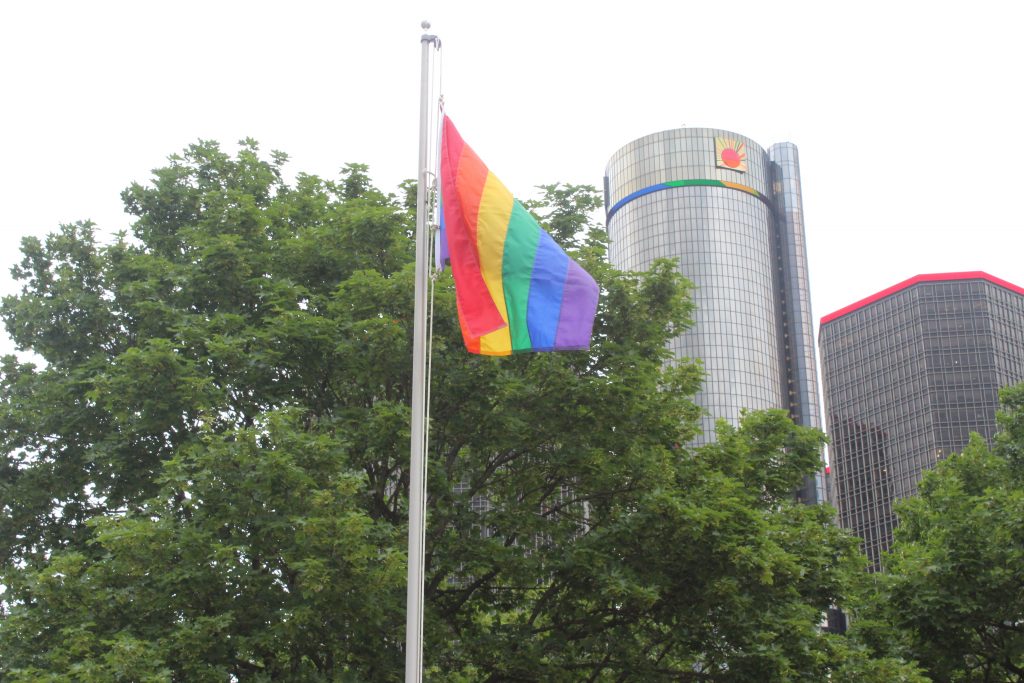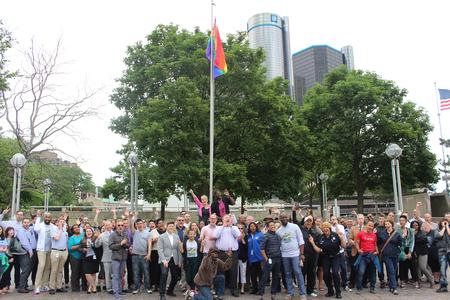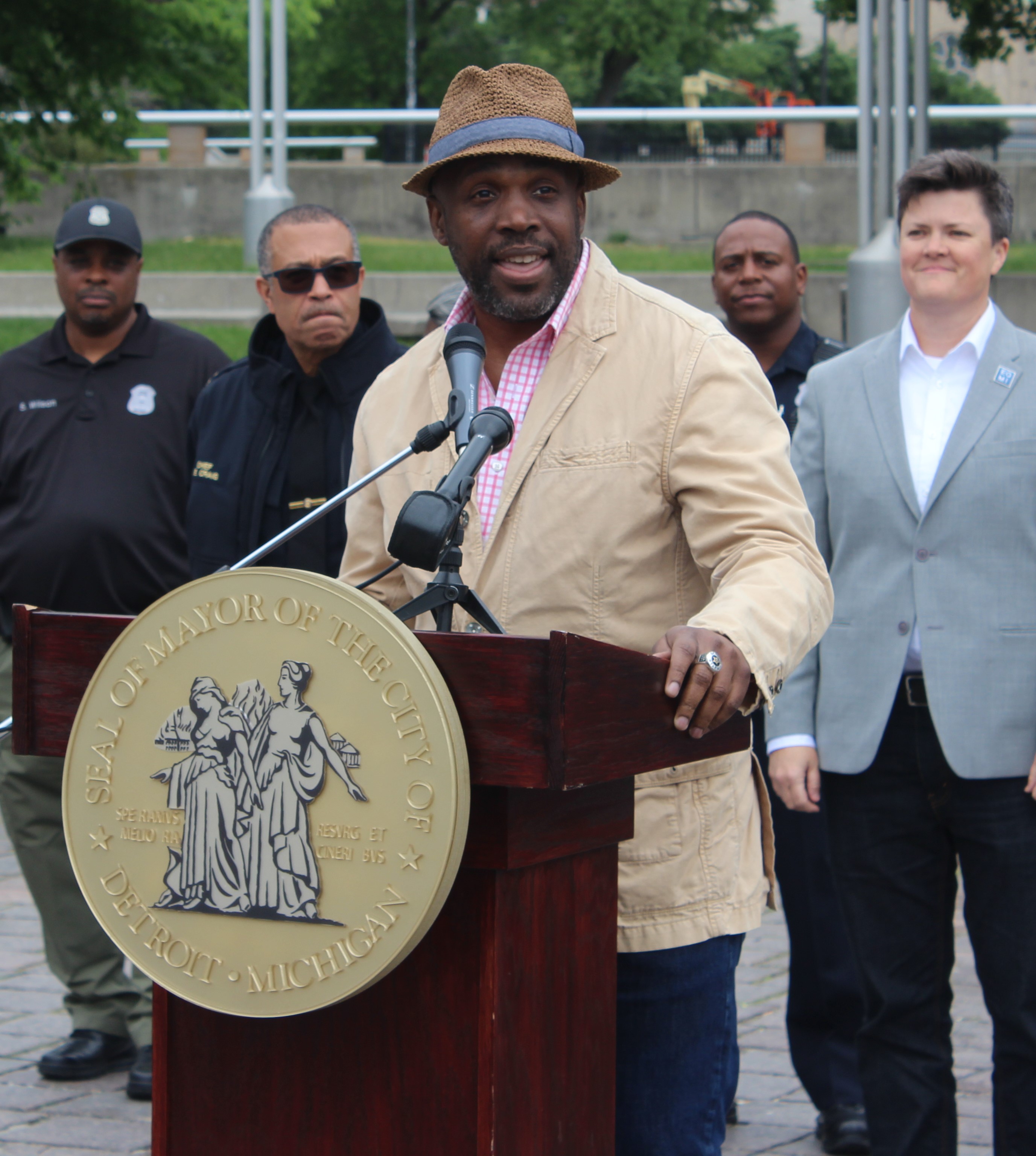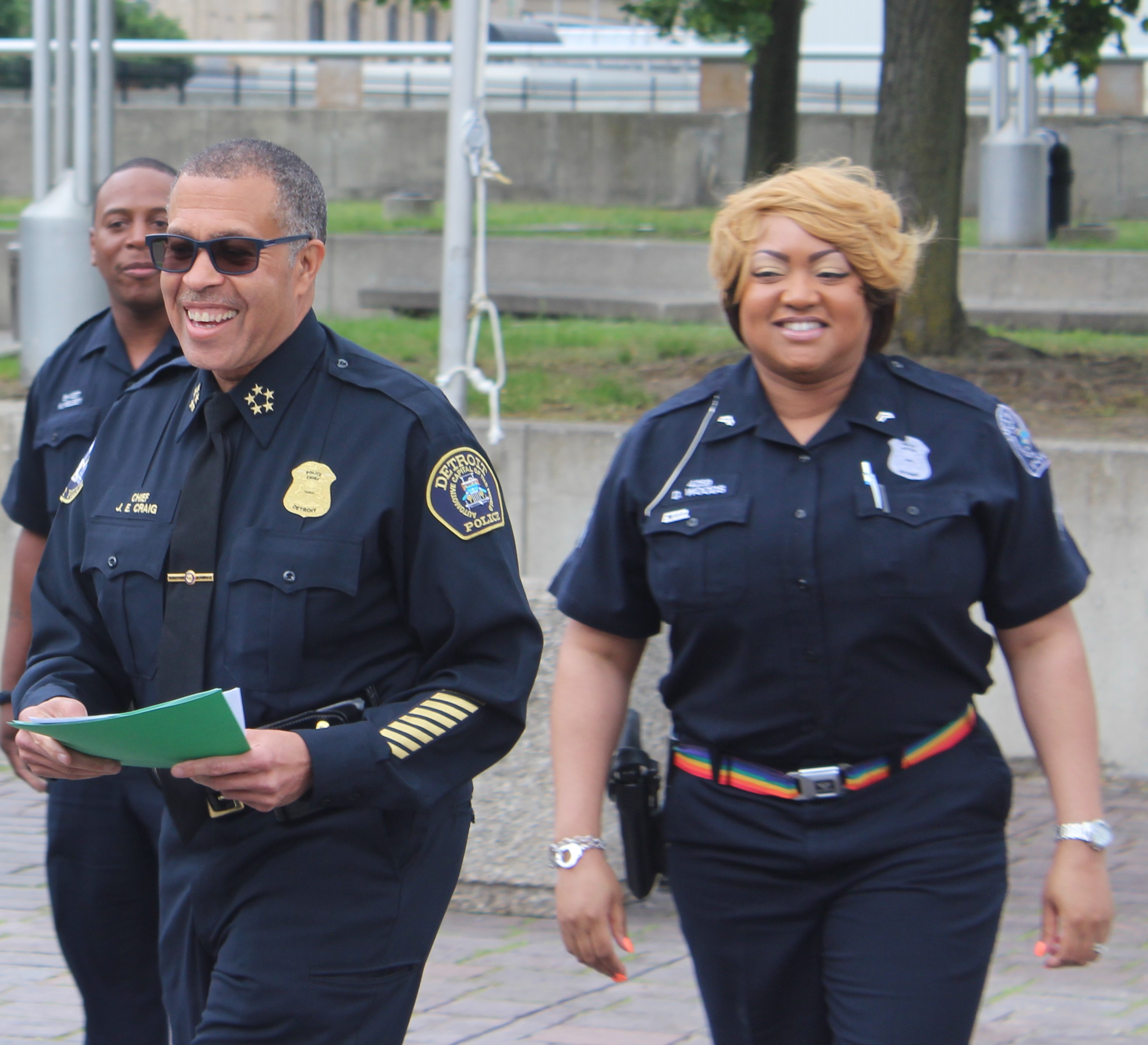Bridging the Gap Between DPD and the LGBT Community
The LGBT Community is working hard with DPD to gain trust and respect between the two.

In past decades, Detroit Police have been known to target gay people, building a prolonged mistrust of the department over the years. Many officers have said that maintaining trust with the community is important to properly serve and protect. With steps to create a more integrated police force, and Detroit Police Chief James Craig’s creation of the Police LGBT Liaison, police are repairing trust between the department and an underserved community.

For the first time in Detroit’s history, Chief Craig helped raise the LGBT Rainbow Flag in June to kick off Pride Month.
Speaking at the event, Craig branded Detroit as an inclusive city, where everyone matters.
But from the 1940s until the late 70s every Detroit citizen didn’t feel the love.
Detroit police were known to target gay people on the street and in bars, as did many law enforcement agencies across the country. State laws and city ordinances were created to criminalize gay and lesbians.
“This weighed over people’s lives,” says Dr. Tim Retzloff. He’s a professor of LGBT studies and history at Michigan State University. “Because there was this constant threat of being arrested by the mere fact that you were queer or you were gay or lesbian, you were an outlaw.”
Retzloff says police would scour popular nightlife spots…sometimes undercover.
“An undercover officer would basically sit in a bar and wait to be solicited by someone. They would kind of have the new younger rookie cops who were like young good looking guys to kind of go and sit in.”
Vague laws such as “gross indecency” and “accosting and soliciting” were used to target LGBT people in gay clubs who were looking to invite someone home or who engaged in certain sexual acts.
One liquor control regulation explicitly made it illegal for a “licensed establishment to be frequented by or become a meeting place or hangout for known homosexuals.”
Most of those laws were taken off the books in the late 1970s. But some were not revoked until 2003.
That history has influenced the way Detroit’s LGBT community views police.

Curtis Lipscomb is the founder and Executive Director of LGBT Detroit, a nonprofit that helps guide and mentor LGBT members. He says it wasn’t until the late 1990s when people began protesting this treatment that the Detroit Police Department began looking into ways to repair the relationship.
Lipscomb has worked with many different people on the police force to help build relationships. Talks began with former Chief Ralph Godbee about how officers should interact with gay people. But Lipscomb still says there is more work to be done.
“The police department is made up of people, and if people have a better understanding of who they serve, then they’ll less likely be problems when there is engagement between civilians and those in law enforcement,” Lipscomb says.
Enter Corporal Dani Woods.

She is the department’s first LGBT Liaison and a lesbian. She is a member of both the DPD and the gay community, which she says gives her an advantage in bringing the two together.
“That’s how you bridge the gap,” Woods says. “You begin with creating an understanding environment, a safe space where we can both, both law enforcement and LGBTQ people can at least come to the table and meet each other half way, provide an active listening ear.”
Woods brings the concerns of the community into her training seminars with the force, where she teaches other officers the do’s and don’ts of engaging with someone who identifies as lesbian, gay, or transgender.
It’s called the LGBT Sensitivity Awareness and Competency Training.
And it’s mandatory.
“We definitely do terminology, need to get it down pat and learn what these letters are what they mean,” Woods says. “History, case law, even just interaction, searching, and seizure.”
Those are just a few of the topics covered in her course. But more importantly, Woods says she wants to make sure that officers know to just treat anyone who is gay lesbian bisexual or transgender as a person.
“Always respect the identity. You don’t have to try and figure people out. That’s not your job to figure someone’s identity out or their orientation. Look at the person.”
Woods says the relationship continues to improve, but still has a long way to go. She says since she’s been on the job, crime reporting from the LGBT community has increased, which shows there’s faith that the police officers are working to protect the community.
LGBT Detroit’s Curtis Lipscomb says he knows there is work on both sides that still needs to be done.
“We know that we need the police’s help to enforce order,” he says. “And we know that they need guidance from us in order to do that. They can’t do this alone.”
